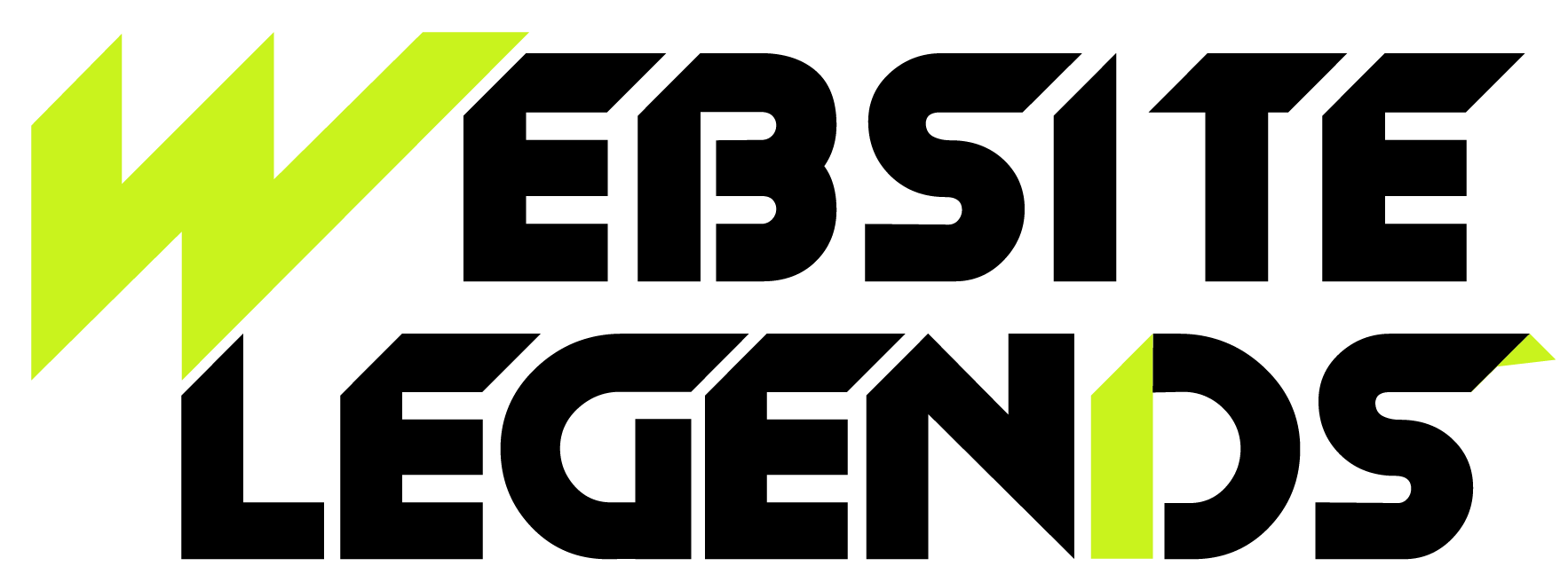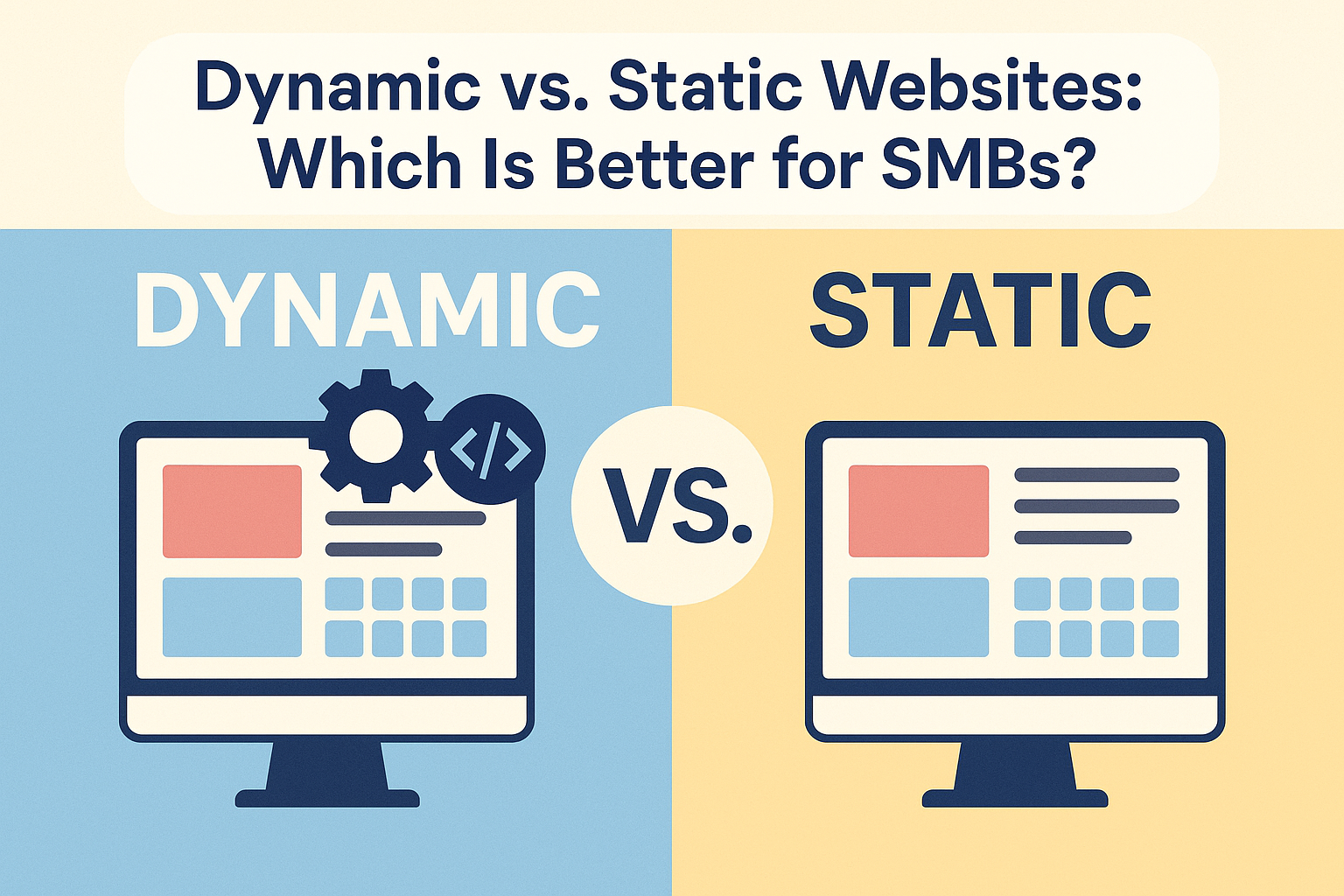In today’s digital-first marketplace, your website is more than an online business card—it’s a lead generator, brand ambassador, and customer service rep all in one. But before you can launch a site that works for your business, there’s a foundational decision to make: Should you go with a static or dynamic website?
If you’re considering custom web development to build a professional, future-proof site for your small or mid-sized business (SMB), understanding the difference between static and dynamic websites is essential. The choice affects everything from your site’s speed and scalability to how easily you can update content and integrate new features.
What Is a Static Website?
A static website is made up of fixed HTML pages. Each page is coded individually and delivered exactly as it is stored on the server. There’s no real-time content generation; what you see is what you get.
This approach is straightforward, fast, and secure—ideal for businesses that need an online presence but don’t require frequent content updates or interactive features.
Common Use Cases for Static Websites:
- Landing pages
- Digital portfolios
- Small business websites with limited content
- Event or promotional microsites
What Is a Dynamic Website?
In contrast, a dynamic website generates content on the fly using server-side technologies (like PHP, Python, or JavaScript frameworks) and databases. The same URL can display different content depending on user input, behavior, or preferences.
Dynamic websites are often used for content-heavy or feature-rich sites that require frequent updates, such as blogs, e-commerce platforms, membership portals, and content management systems (CMS) like WordPress.
Key Differences Between Static and Dynamic Websites
Let’s look at how these two types of websites stack up in terms of features that matter most for SMBs.
-
Speed and Performance
Static websites load faster because the content is pre-rendered and doesn’t rely on backend processing. This makes them ideal for delivering content quickly, and they also support responsive website design—especially on mobile devices.
Dynamic websites can be slightly slower, particularly if they involve heavy scripts, large databases, or third-party integrations. However, performance can be improved with caching and optimized coding practices.
-
Ease of Updates
Static websites are harder to update because changes often require manual editing of each HTML file. This can be tedious and time-consuming, especially for non-technical users.
Dynamic websites excel here. You can update content, add blog posts, or upload product listings through a backend CMS interface—no coding required.
-
Customization and Functionality
Dynamic sites allow more interactivity and personalization. You can integrate features like search bars, user logins, shopping carts, booking systems, and more. That’s why businesses looking for custom web development often lean toward dynamic frameworks.
Static sites, while more limited in features, can still be customized—but usually at a higher development cost if you want to replicate dynamic behaviors.
-
Security
Static sites offer a lower attack surface since they don’t rely on server-side databases or code execution. This makes them highly secure by default.
Dynamic sites are more vulnerable to threats like SQL injections or cross-site scripting (XSS), but proper security practices and regular updates can mitigate these risks.
-
Cost and Maintenance
Static websites tend to be more affordable to host and maintain, especially if you don’t plan on frequent updates. Dynamic sites may incur additional costs for database management, plugin licensing, and server resources.
Still, the added functionality of a dynamic site can deliver better ROI for businesses with ongoing content needs or audience engagement goals.
Which Type Is Right for Your Small Business?
Now comes the million-dollar question: Which one is right for you? The answer depends on your goals, budget, and how you plan to use your site.
Choose a Static Website if:
- Your site is mostly informational (about page, services, contact form)
- You rarely update content
- Speed and simplicity are your top priorities
- You don’t need advanced user interactions or integrations
This could be ideal for freelancers, consultants, or local service providers who need a simple, fast, and affordable online presence.
Choose a Dynamic Website if:
- You need regular updates (blogs, news, events)
- You want to integrate advanced features (e-commerce, booking, member login)
- Your team wants to manage the site without needing a developer
- You’re planning a scalable site that will evolve over time
Dynamic sites are perfect for growing businesses, online stores, and service providers who want a modern, interactive website that does more than just sit there.
The Role of Responsive Design (for Both Types)
Regardless of whether your website is static or dynamic, responsive website design is a must in 2025. With more than 60% of users browsing on mobile devices, your site needs to adjust seamlessly across screen sizes.
Static sites can be made responsive through well-written CSS frameworks like Bootstrap or Tailwind. Dynamic sites often come with mobile responsiveness baked into CMS themes and templates—but still require optimization for performance and layout consistency.
SEO Considerations
Both static and dynamic websites can be SEO-friendly, provided they’re properly optimized.
Static sites have an edge in speed, which is a confirmed ranking factor. They also serve clean HTML, which search engines crawl easily.
Dynamic websites need extra attention to avoid issues like:
- Duplicate content from query parameters
- Slow page load speeds
- Uncrawlable content hidden behind scripts
Working with an experienced custom web development team ensures your dynamic site is SEO-ready with clean URLs, optimized load times, structured data, and accessible design.
Myth-Busting: Static Doesn’t Mean Boring
A common misconception is that static sites are plain or outdated. In truth, modern static site generators (like Jekyll, Hugo, and Gatsby) allow developers to build beautifully designed, lightning-fast websites with interactive components and seamless animations.
These platforms bridge the gap between static simplicity and dynamic flexibility, offering a middle ground that’s gaining traction—especially for tech-savvy SMBs.
Conclusion
Choosing between a static and dynamic website doesn’t have to be a binary decision. The right approach depends on how your business operates today—and how it plans to grow tomorrow.
If you need a quick, secure, and lightweight site, go static. If you want a powerful, scalable platform that puts content control in your hands, go dynamic. And if you’re still unsure, that’s where Website Legends can help.
Our team specializes in custom web development solutions tailored to your business goals, with a keen focus on responsive website design, security, and performance—whether static, dynamic, or a hybrid of both.


